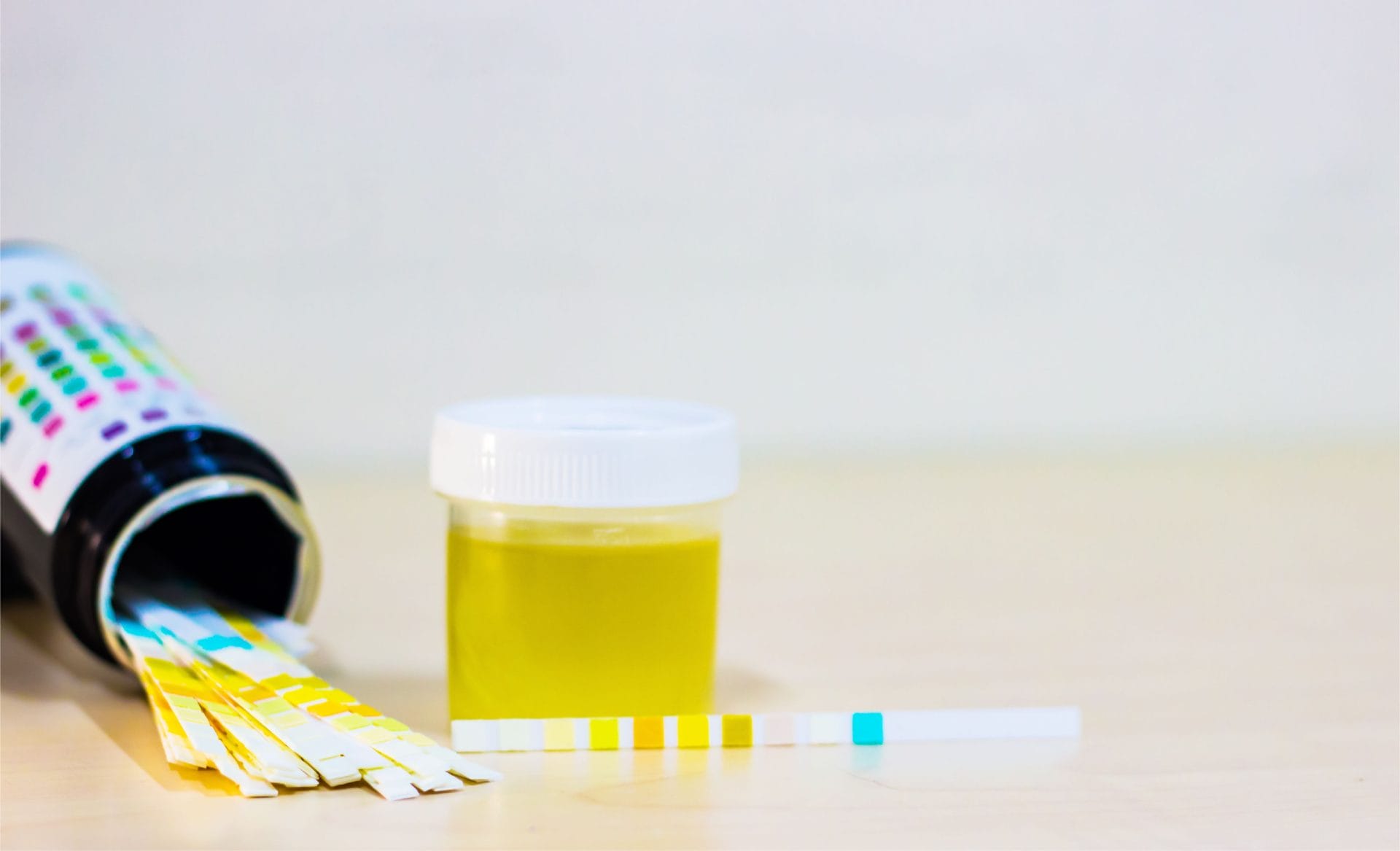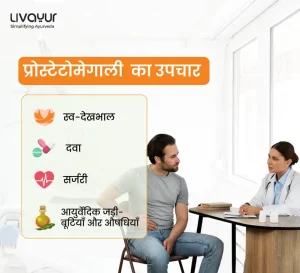
Glycosuria, commonly known as glucosuria, is a medical condition characterised by the presence of reducing sugars in one’s urine, such as glucose, galactose, lactose, and fructose. It can be indicative of some underlying disease, particularly related to diabetes mellitus. [1]
According to Ayurveda, the manifestations of Pramehas are characterised by increased urine output and cloudy urine, referred to as “Prabhutavil Mutrata.” Specifically, the distinctive symptom of Madhumeha is the presence of glucose in the urine, known as “Glycosuria” (Mutre abhi dhavanti Pipalikashcha). This condition is associated with elevated blood sugar levels, surpassing the usual range, and the detection of sugar in the urine. [2]In this comprehensive exploration, we will delve into the Glycosuria meaning, symptoms and causes of Glycosuria and its management.
Symptoms of Glycosuria
- Experiencing cloudy urine (Avila mutrata)
- Sensations of burning, tingling, or pricking in the hands or feet (Hasta pada suptata)
- Persistent feelings of fatigue (Alasya)
- Unexplained weight loss, even with regular eating
- Increased susceptibility to several infections or delayed wound healing
- Sudden alterations in vision [2]
Causes of Glycosuria
As per the Sushruta and Vagbhata, Prameha is distinguished by the presence of abundant urine flow, which appears cloudy or turbid and this depends on the specific Doshas and Dhatus involved and their varying proportions in each type. [3]
Some Prominent Causes of Glycosuria
- Diabetes: This condition causes high blood and urine glucose levels because it impairs the body’s capacity to regulate blood sugar levels.
- Overindulgence in fatty and salty foods
- Consumption of new grain varieties
- Excessive alcohol intake
- Inactive Lifestyle
- Absence of mental and physical activity
- Lack of bodily cleansing routines
These causative factors exacerbate various bodily elements, namely Kapha, Pitta, Meda, and Mamsa. They obstruct the normal flow of Vata in the body. As a result, agitated Vata carries Ojas (immunity) to the urinary bladder (Basti), leading to the development of Prameha. This condition ultimately progresses to Madhumeha. [4]
Here’s What You Should Know about the Types of Glycosuria in Ayurveda
- Renal Glycosuria:
Renal glycosuria is a rare genetic condition where the kidneys are unable to reabsorb glucose efficiently. It is typically benign and not associated with diabetes. Individuals with renal Glycosuria excrete glucose in their urine even when their blood glucose levels are normal. [6]
- Diabetes-Related Glycosuria:
This is the most common type of Glycosuria and is associated with diabetes mellitus. It occurs when elevated blood glucose levels exceed the renal threshold, leading to the excretion of glucose in the urine. [1]
Ayurveda classifies glycosuria into Santarpanajanya Vikara, manifesting in three primary types based on the predominant Dosha involvement and the underlying causes. They include:
- Vataja Prameha:
This type of Glycosuria is primarily associated with an imbalance in the Vata dosha. It is characterised by symptoms such as excessive thirst, dryness, and frequent urination.
- Kaphaja Prameha:
Kapha Dosha predominance is a key factor in this type of glycosuria. Individuals with Kaphaja Prameha may experience lethargy, excessive salivation, and respiratory issues.
- Pittaja Prameha:
Pitta Dosha plays a central role in this type of Glycosuria. Symptoms may include a burning sensation, increased body heat, and skin problems. [5]
How is Glycosuria Diagnosed?
Glycosuria can be diagnosed in several ways, but urinalysis is the most common approach.
Doctors may also ask for blood tests to check your blood sugar.
Random Blood Sugar levels should ideally remain below 200 mg/dL.
For Fasting Blood Sugar, the recommended limit is less than 126 mg/dL.PPBS (2 Hours) should be maintained at levels lower than 140 mg/dL. [2]
Treatment of Glycosuria
Palliative Treatment (Shamana):
For the prevention as well as management of Diabetes Mellitus, Ayurvedic medicine commonly employs the following single or compound formulations:
- Single Drugs: These include Amalaki churna, Haridra churna, Jambu bija churna, Meshasringi churna, Methika churna, and Vijaysara churna.
- Compound Formulations: Ayurvedic practitioners may also prescribe compound formulations such as Nishamalaki churna/tablet, Triphala churna/tablet, Shiva gutika, Chandraprabha vati, Silajatvadi vati, Dhanvantara ghrita, Kshira baladi taila, and Saptamrita lauha.
Purificatory Procedures (Samshodhana Chikitsa):
Ayurveda emphasizes the importance of eliminating toxins from the body through bio-cleansing procedures, commonly referred to as Panchakarma. This cleansing process is followed by palliative therapy (Shamana Chikitisa).
In obese patients (Sthoola Pramehi), bio-cleansing therapy in the form of Vamana (therapeutic vomiting), Virechana (purgation), and Vasti (enema) may be performed. Subsequently, palliative therapy is initiated.
In lean and thin patients (Krish Pramehi), the emphasis is on palliative therapy alone, without the need for bio-cleansing procedures.[2]
Rejuvenation Therapy (Rasayana):
Ayurveda promotes the use of Rasayana therapy, which includes substances like Shilajatu, Amalaki, and Haridra, to rejuvenate the body and enhance overall health. [2]
Lifestyle Modifications:
Alongside these treatments, lifestyle modifications are considered essential. These include regular exercise, especially walking, as well as the practice of Yoga and Meditation under proper supervision. [2]
FAQs
1. What are some preventive measures of Glycosuria in Ayurveda?
Dos (Pathya):
Adhere to regular meal times for a balanced diet.
• Include foods like old harvested cereals, barley (Yava), Sorghum (Jowar), whole wheat atta, bitter gourd (Karela), green leafy vegetables, garlic (Lasuna), turmeric (Haridra), and aloe (Kumari) in your diet. Also, consider consuming fruits such as guava, oranges, and Indian blackberry (Jamun) as they can be beneficial.
• Opt to reduce the consumption of rice, carbohydrate-rich foods, and fried or processed foods.
Don’ts (Apathya):
• Avoid sugarcane juice, jaggery, sugar, and milk products in your diet.
• Stay away from tubers, sweets, soft drinks, fried foods, and sweet fruits like mangoes, bananas, custard apples, and dates.
• Refrain from prolonged periods of fasting or staying on an empty stomach for too long.
• Avoid ice cream, burgers, pizzas, and other fast foods.
• Promote an active lifestyle and discourage a sedentary one.
• Minimise daytime napping and excessive sleeping.
• Abstain from alcohol consumption. [2]
2. What are the main renal glycosuria causes?
The principal factor behind renal glycosuria is a detrimental alteration (mutation) occurring in a specific gene referred to as “SLC5A2,” which is also known as the renal sodium-glucose cotransporter gene. Renal glycosuria has been associated with various inheritance patterns, but further research is necessary to provide greater clarity regarding the exact mode of inheritance. [6]
3. Is glycosuria in pregnancy common?
Glycosuria is detected in approximately 50% of pregnant women at some stage during their pregnancy. This occurrence is thought to be a result of an elevated glomerular filtration rate. The renal threshold for glucose varies considerably and can sometimes yield a positive glycosuria test even when blood sugar levels are normal. [7]
Conclusion
Glycosuria, as understood from an Ayurvedic perspective, is a complex condition that arises due to imbalances in the body’s Doshas and can be influenced by dietary, lifestyle, and emotional factors. Ayurveda offers a holistic approach to the management of glycosuria, focusing not only on alleviating symptoms but also on addressing the root causes and promoting overall health and well-being.
Disclaimer:
This article is written from a health and wellness perspective and is not medical advice. Kindly seek the help of a certified medical practitioner before initiating any treatment.
References:
- Physiology, Glycosuria
- DIABETES
- A review of the history of prameha and diabetes mellitus
- A CRITICAL REVIEW ON PRAMEHA MANAGEMENT FROM VARIOUS COMPENDIA
- Role of Pathya-Apathya in the Management of Prameha (Type-2 Diabetes Mellitus)
- Renal Glycosuria
- No need for glycosuria/proteinuria screen in pregnant women
- https://www.healthline.com/health/glycosuria#diagnosis

























